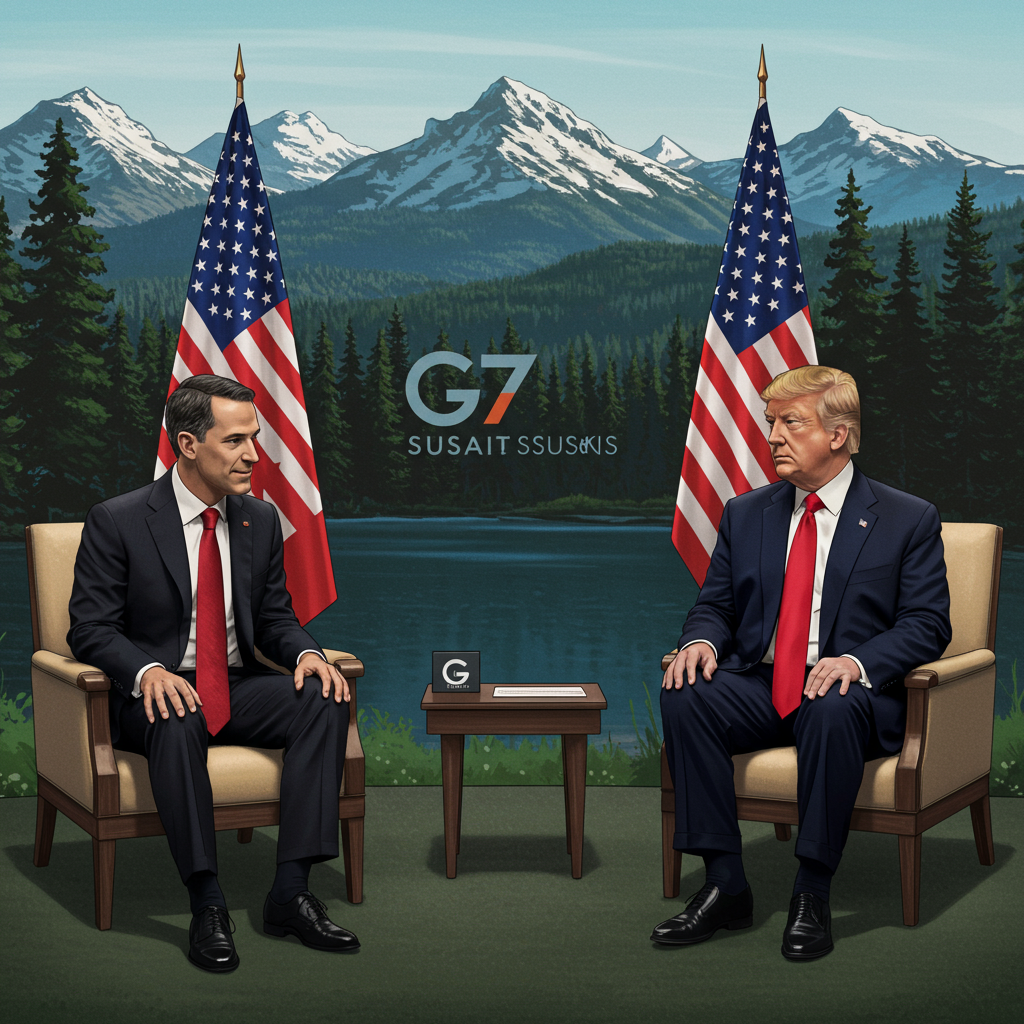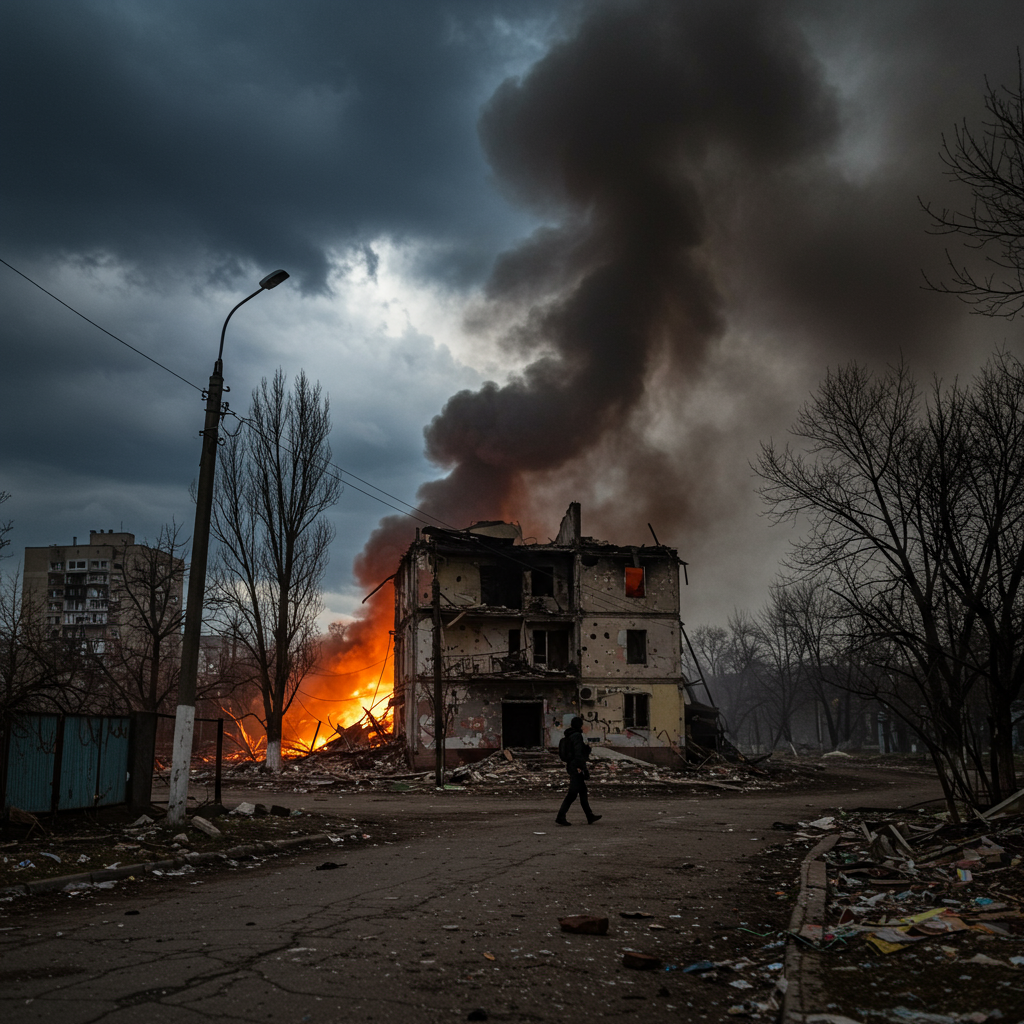Newly minted Canadian Prime Minister Mark Carney is facing his first significant international challenge as he hosts Group of Seven (G7) leaders, including U.S. President Donald Trump, at a crucial summit in Kananaskis, Alberta. This gathering unfolds amidst a turbulent geopolitical landscape marked by conflicts, economic uncertainty, and shifting global dynamics.
The summit is seen as a critical test for Carney, who rose to power with a unique background spanning high finance and central banking before entering politics. His ability to navigate complex international relations and manage key relationships, particularly with the unpredictable U.S. president, is under intense scrutiny.
Avoiding the Charlevoix Shadow
A primary objective for Canada, and a major test for Carney, is to avoid a repeat of the contentious 2018 G7 summit in Charlevoix, Quebec, hosted by the previous government. That meeting ended in disarray after President Trump withdrew his support for the traditional joint communiqué, largely due to disagreements over trade tariffs. The visual of then-German Chancellor Angela Merkel confronting Trump became an enduring symbol of the friction.
Carney’s key takeaway from that experience, reportedly, is the importance of consistency – saying the same thing in private and public, before and after the summit. To foster consensus and minimize potential flashpoints over a single document, Canada has opted to issue a series of shorter, issue-specific joint statements rather than a comprehensive communiqué.
The High-Stakes Trump Relationship
Central to the summit’s success is Carney’s handling of his relationship with Donald Trump. Though Carney campaigned openly against Trump’s past actions and protectionist stance, he now holds a direct line to the president, essential for negotiating crucial economic and security agreements.
Their interactions are a high-wire act. Canadian officials aim to strike a delicate balance: being firm on Canada’s interests, particularly the removal of U.S. tariffs on Canadian steel, aluminum, and auto industries, while maintaining a respectful dialogue. This tariff removal is seen by some experts as a prerequisite for further bilateral cooperation.
Managing Trump requires navigating his unpredictable demeanor, which can range from charming to confrontational. Experts advise Canadian officials to be highly prepared, focus on a few key points, and be ready to steer conversations back to the agenda while communicating succinctly. While sources indicate progress on a potential tariff deal, uncertainty remains a constant factor when dealing with the current U.S. administration.
Adding a unique layer of tension, President Trump has reportedly raised the idea of annexing Canada. During an earlier meeting in Washington ahead of the summit, Trump reiterated this notion, prompting Prime Minister Carney to offer a direct and firm pushback, emphatically stating that Canada is “not for sale” and “won’t be for sale, ever.” This exchange highlights the challenging dynamic Carney must navigate.
Navigating a World in Crisis
Beyond the bilateral relationship with the U.S., Carney welcomes leaders amidst a swirl of global challenges. Escalating tensions in the Middle East, particularly the Israel-Iran conflict, have become a central focus of the summit, pushing it to the top of the agenda. Leaders are pressing for de-escalation and discussing potential measures regarding Iran’s nuclear program.
Other pressing issues include the ongoing conflict in Ukraine, with President Volodymyr Zelenskyy attending to advocate for continued support and financing. The summit also addresses the backdrop of a global trade war initiated by Trump and a World Bank forecast predicting the slowest decade of growth since the 1960s, partly attributed to tariff impacts.
Canada’s core priorities for the summit include strengthening economies and enhancing peace and security. Specific agenda items encompass leveraging artificial intelligence, fortifying critical mineral supply chains, countering foreign interference (especially in diaspora communities), and improving global responses to wildfires, a particularly relevant issue for Canada given its recent severe fire seasons.
A Different Diplomatic Approach
Carney’s hosting duties are viewed through the lens of his distinct background and a perceived shift in Canada’s diplomatic posture compared to his predecessor. While Justin Trudeau was sometimes seen as emphasizing values over pragmatic trade-offs, Carney’s approach is characterized by pragmatism and a focus on Canada’s national interests in a rapidly changing world.
His background in global finance and his tenure as Governor of both the Bank of Canada and the Bank of England have provided him with extensive international experience and a deep understanding of global economic forces. This expertise is seen as valuable in navigating complex trade and economic discussions.
The diverse list of invited non-G7 leaders – including representatives from India, Mexico, South Africa, Ukraine, and others – signals a broader engagement strategy aimed at “dealing with the world as you find it,” even when it involves nations with different political systems. This includes delicate diplomatic resets with countries like India (amidst ongoing investigations into the murder of a Sikh activist) and China (following a long diplomatic freeze).
The Path Ahead
The Kananaskis summit is fundamentally about relationship management. For Carney, success will be measured not just by tangible agreements but by his ability to keep key allies engaged and at the table amidst competing priorities and significant disagreements. Even securing consensus on specific issues or simply managing complex interactions without major disruptions would count as a win.
This summit represents a crucial early test for Mark Carney on the world stage, requiring him to leverage his unique skills to navigate a turbulent global environment and manage the most important, and perhaps most challenging, bilateral relationship Canada faces.




